Zalman ZM-M2020W Trimon 3D Monitor Review
Zalman ZM-M2020W Trimon 3D Monitor
Zalman brings 3D gaming to another level, but it doesn't come cheap.
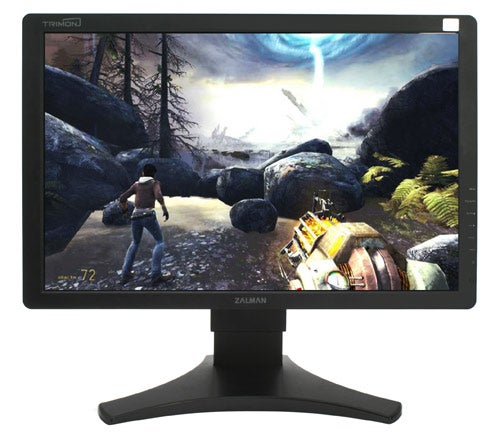
Verdict
Key Specifications
- Review Price: £411.25
The concept of viewing content in a 3D environment has been around for a very long time, and anyone who’s old enough to have sat in a cinema wearing red and green carboard glasses will know that the benefits of 3D movies were questionable to say the least. That said, while I was visiting Dolby’s HQ last year, I was shown what the latest generation of 3D movies look like, employing Dolby 3D processing and hardware, and I have to say that the results were impressive. But the real Holy Grail of 3D viewing is in the home, using content that hasn’t had to be custom made from the ground up.
It’s that 3D experience at home that Zalman is trying to address with its 22in ZM-M220W Trimon monitor, and I’ll admit that I was pretty sceptical about the claims of a true 3D environment. Although having a sceptical streak running through one’s core like seaside rock is an intrinsic part of being a journalist, just as important is the ability to admit that your preconceptions were completely wrong, as mine were in this case. Before I go into any detail I have to say that the 3D effect created by the Zalman ZM-M220W is very, very good.
Before I get into the nitty gritty of the 3D aspect, let’s look at what the ZM-M2020W has to offer as a traditional 2D monitor. Despite not traditionally being a manufacturer of display technology, Zalman has done a very good job with the design of this screen, which looks every bit as sleek and stylish as anything you’re likely to see from Samsung, ViewSonic or HP. The bezel surrounding the screen is slim, with rounded corners that somehow make it look even more svelte than it is. Branding is understated enough as to not distract from the minimalist lines and the matte black finish on the bezel, case and stand also helps give this screen some “less is more” appeal.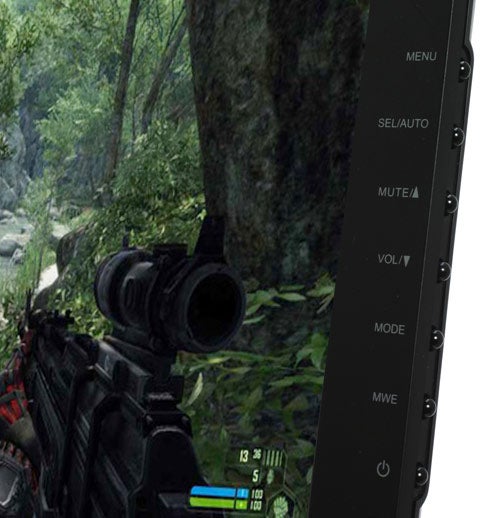
Along the right edge of the screen you’ll find a plethora of control buttons, but unlike so many other monitors that sport buttons on the side edges, the ZM-M2020W has clear labelling on the front of the bezel as to what each button does, thus saving you the neck ache of looking around the side every time you want to adjust something. All the controls are pretty standard – you get a Menu button that takes you into the OSD, below that is a Select button, that doubles up as a one touch Auto Adjust control in case you’re using an analogue input. Next are volume up and down buttons, while the volume up will mute the sound if the volume adjust bar isn’t already present on screen. The curiously named Mode button will switch between the DVI and D-SUB inputs.
The final adjustment button is labelled MWE and it switches between preset picture modes. That’s nothing unusual these days, but what is nice is the fact that as you cycle through the different modes, you get a preview of what each one will look like on the left half of the screen, while on the right your current settings remain for comparison. The idea of the split screen comparison isn’t new, but Zalman’s implementation is very slick and seamless. Of course there’s also a power button for anyone who wants to be green and not leave their screen on standby when their PC shuts down.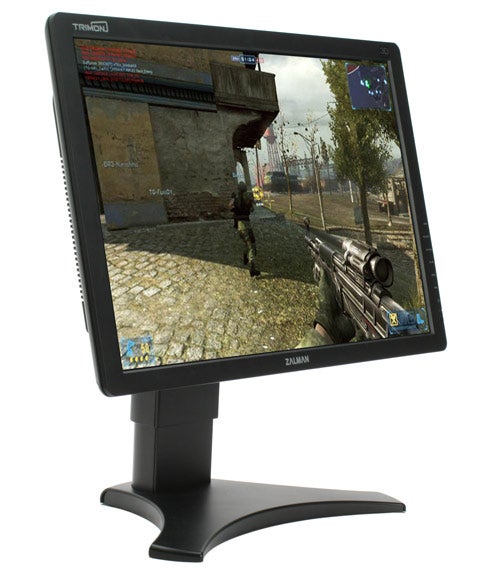
The stand is well designed with a three prong base keeping the ZM-M2020W in place no matter how much you adjust the screen. Talking of adjustments, the central column offers dampened height adjustment that’s as smooth as I’ve encountered on any screen. Likewise the screen panning is smooth and progressive, allowing for single finger adjustments if you so desire. Finally, you also have the option of pivoting into a portrait mode, just in case you want to work on a particularly long document.
At the rear of the screen you’ll find the power socket, a DVI port and a D-SUB port, along with two 3.5mm jacks. The 3.5mm connectors are for a line-in from your PC’s sound card, and for your headphones, so that you can pass said sound through. Unfortunately, there is no labelling indicating which jack is which, so it’s trial and error when it comes to plugging your cables in – of course I got it wrong the first time. But the main problem with the audio pass through is that you get quite loud and annoying feedback through the headphones – this was definitely due to the monitor, because the feedback disappeared when I plugged directly into the soundcard.
Like many monitors that are aimed at gamers, the ZM-M2020W has a high contrast glossy coating. These coatings bring with them two major advantages – the first being improved black level response to avoid the greying over that afflicts many LCD screens when displaying dark scenes. The second advantage is a direct knock on of the improved black levels, and that’s a vivid and vibrant colour pallete. 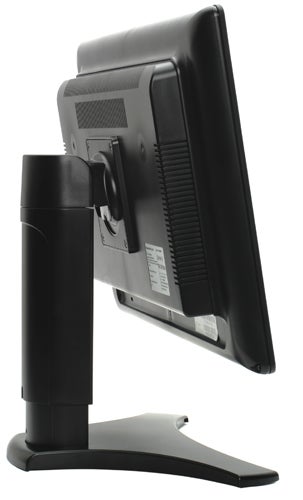
In general I’m all for high contrast coatings on screens that are going to be used primarily for gaming or watching video, so I can understand Zalman’s decision to use one. However, I do feel that Zalman has gone over the top with the gloss effect on this screen, turning it essentially into a mirror. I’m not joking here, when the screen is dark, the reflected image is so clear that you may as well be looking into a desk mounted shaving mirror. On the plus side, for the seriously paranoid PC user, there’s no way that anyone is going to sneak up behind you if you’re using this screen, you’ll see them coming a mile off, I promise you.
The excessive reflectivity of the ZM-M2020W practically rules it out for general PC use, because it’s simply too distracting. I tried writing this review using the Zalman, but I just couldn’t concentrate on what I was doing since my eyes kept wondering to the entire office behind me, which was clearly discernable no matter how many windows or applications I had open. 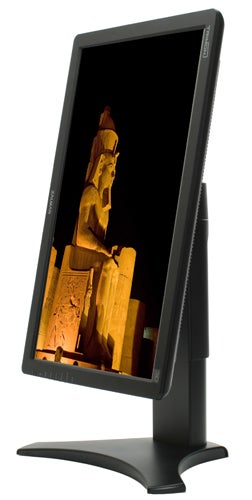
The issue with the glossy coating is a shame, because when you take that out of the equation the ZM-M2020W produces some pretty impressive images. Firing up DisplayMate proved that colour accuracy is spot on in most instances, while the Zalman showed no signs of compression at the high or low intensity ends of the spectrum. Take ambient light out of the equation and this is a very impressive general purpose display, but most people don’t tend to work at their PC in the dark.
Of course I accept that this screen isn’t aimed at the average PC user, and it’s the 3D aspect that’s the real USP, and here it’s hard to fault what Zalman has done. As I said at the beginning of this review, I was quite sceptical about the whole concept of a 3D monitor, but the first time I fired up a game and donned the bundled stereoscopic glasses I was, quite frankly, blown away!
One important thing to note about the 3D side of things, is that it only works with nVidia hardware. You’re basically going to need a GeForce 6 series or above to get the effect, which should account for a significant amount of gamers out there. Whether the lure of 3D gaming is enough to make you switch from ATI to nVidia is questionable, but it’s good to see nVidia investing in more than just shifting polygons.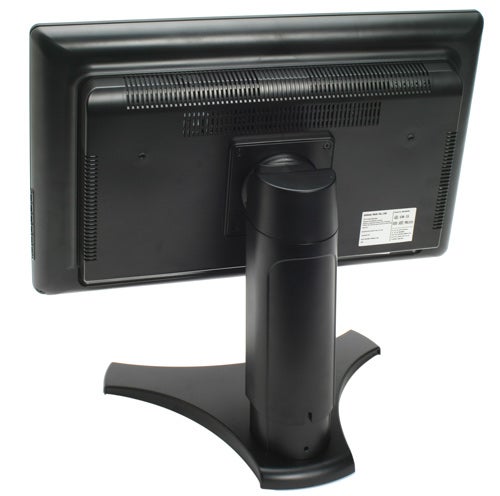
Boston – the company who supplied the ZM-M2020W for review – also supplied me with a PC to drive it, and on this PC was a selection of games to test the screen with. I kicked things off with Tomb Raider Anniversary, because, let’s face it, if ever there was a game that cried out for realistic 3D it’s Tomb Raider! To say that Lara makes an impression on this screen is an understatement of epic proportions, and her curves have simply never looked so real. But it wasn’t just Lara that impressed, the level of depth in the image is quite staggering, giving you a real sense of distance between objects in the foreground and those in the background.
If you’re worried about having to wear big, heavy glasses to get the 3D effect, don’t be. The bundled glasses look just like a normal (although somewhat low rent) pair of sunglasses, in the RayBan Wayfarer mould. For all of you out there who wear glasses, you’ll be happy to know that clip on lenses are also bundled, allowing you to keep your prescription specs on.
You can fine tune the amount of depth you want in a game to get the best effect, and ensure comfortable viewing. Considering that I’m predisposed to migraines, it’s commendable that I was able to play several games on this screen without my head feeling like it was about to split open. That said, firing up Command and Conquer 3 did cause me considerable pain, since no amount of fine tuning could achieve a solid 3D image. Hugo also tried to get a clean image on C&C3 in case it was a problem with me, but he too walked away feeling distinctly ill.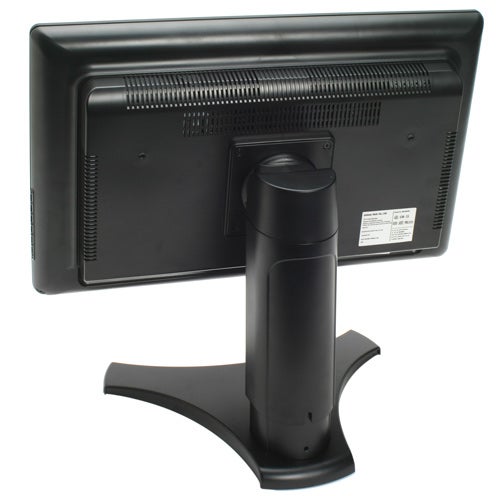
So game support isn’t perfect, but when it’s good, it really is very good. To prove that Boston hadn’t tweaked the games that were pre-loaded onto the system, I installed a couple of my own, one of which was Tiger Woods PGA Tour ’08. I’m not a massive fan of golf games, but Tiger Woods in 3D does look pretty spectacular. One of the most impressive aspects of the 3D system is that you don’t need to sit in a sweet spot either – the effect is just as impressive even if you’re sitting off to one side, meaning that multi-player gaming on the same screen is a definite option.
As with any cutting edge technology, the ZM-M2020W doesn’t come cheap, especially when compared to traditional 1,680 x 1,050 22in widescreen displays, so you’ll have to really want 3D gaming to stump up the cash. In fact, at over £400 including VAT, you’ll need to ”really” want the 3D features, considering the fact that you can almost buy two decent standard 22in screens for that price.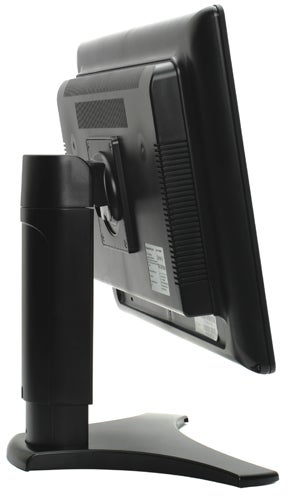
The big question is whether the ZM-M2020W is worth the money, and unfortunately I’m not convinced that it is. Don’t get me wrong, the 3D aspect is truly impressive and has completely changed my perception on “real” 3D gaming. However, as a standard monitor the ZM-M2020W just doesn’t cut the mustard, and for this kind of money, it should.
”’Verdict”’
Zalman has proved that nVidia’s investment in 3D display technology was a sound one. This screen really does produce a truly immersive 3D environment in which to play your games. In fact everyone in the office was surprised at how good the 3D effect was on the ZM-M2020D.
Unfortunately the excessively glossy coating on this screen doesn’t just make it impossible to recommend for general Windows use, but it also severely affects the 3D aspect, since if you have the slightest hint of ambient light in your room, you’re constantly distracted by the reflection of your own face and everything behind you.
The constant buzzing feedback in the audio pass through is another annoyance, as is the lack of labelling on the audio ports themselves. What Zalman has created though, is a great building block, on which to base a second generation screen that addresses all the shortcomings of this one. With nVidia continuing to develop this technology at the graphics card end, there’s every chance that the next 3D monitor to land in the TrustedReviews labs will be a real winner.
Trusted Score
Score in detail
-
Image Quality 7
-
Value 6

